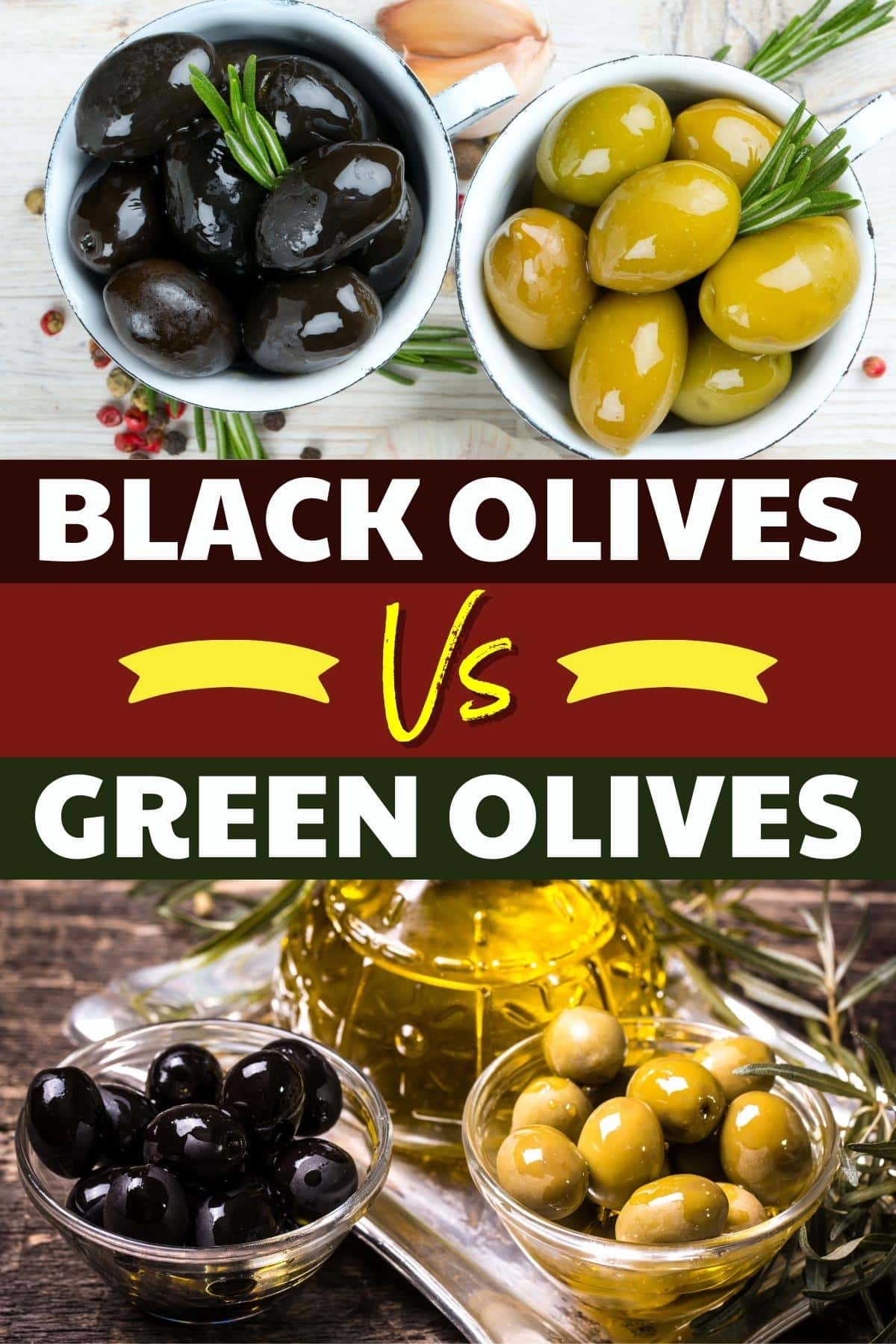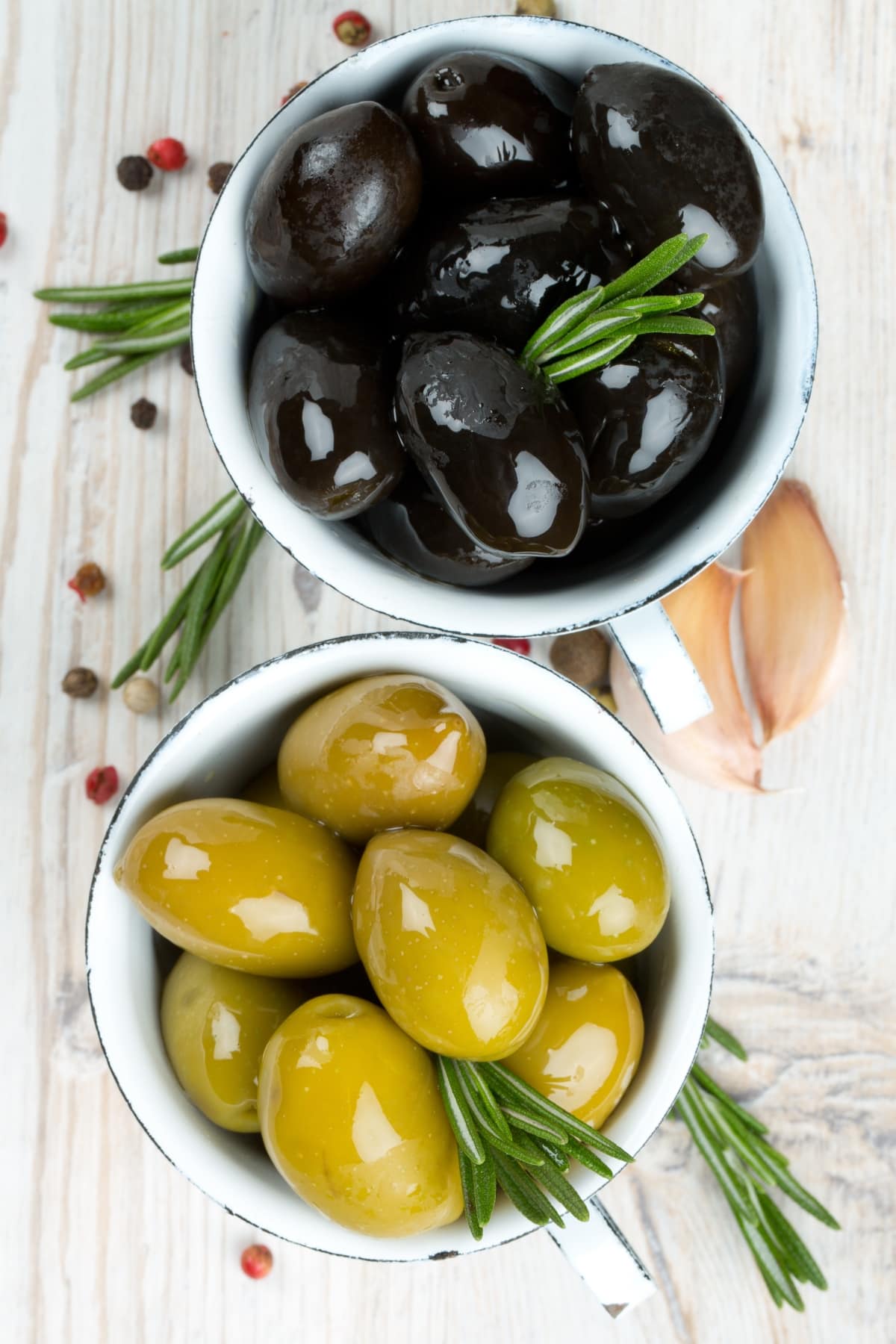Black olives and green olives differ in their ripeness and flavor profiles. Green olives are harvested before they ripen. They have a firmer texture, bitter taste, and a more vibrant green color.
Black olives are allowed to fully ripen on the tree before harvesting. They have a softer, smoother texture and a milder, less bitter flavor.
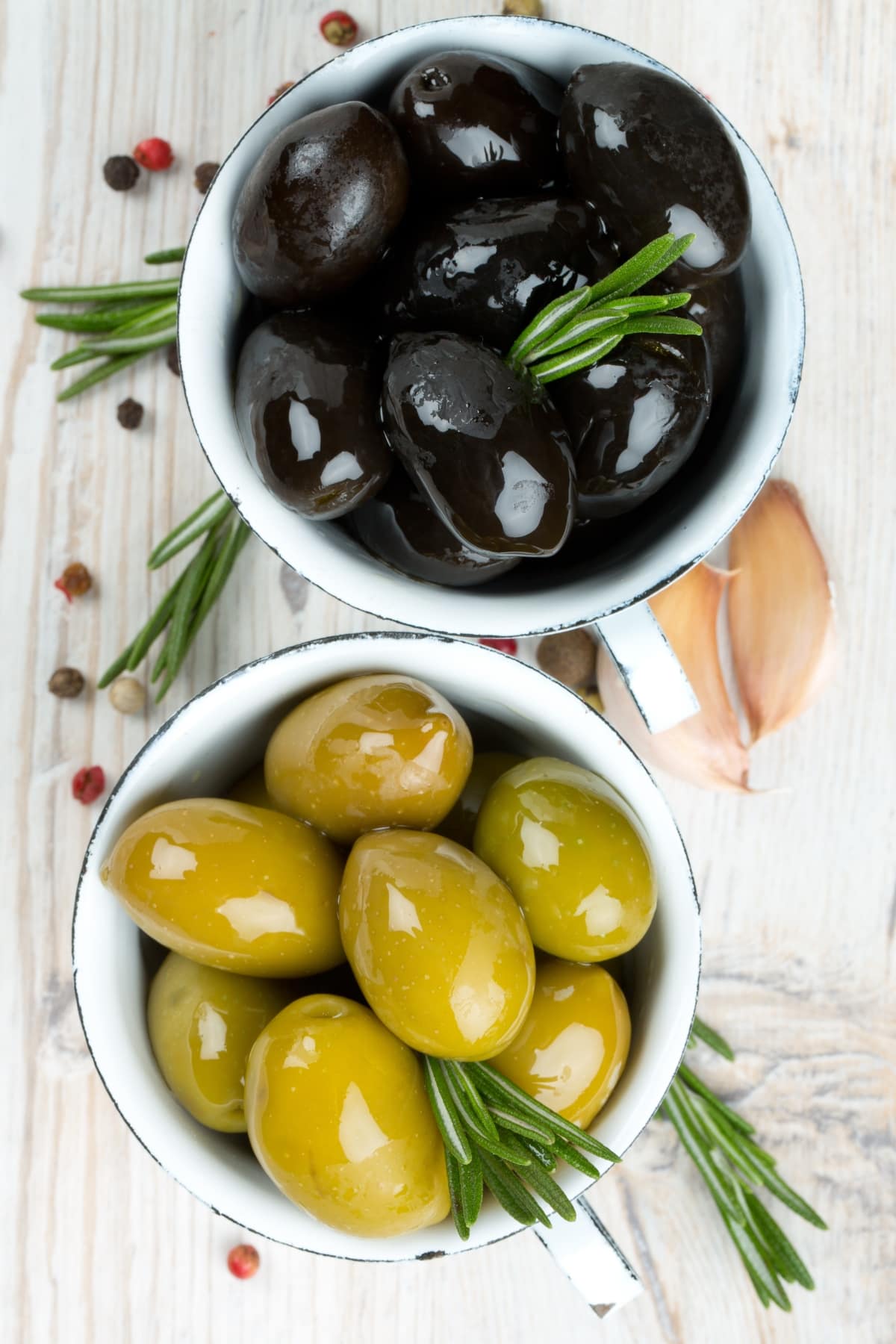
Olives are a staple in Mediterranean cuisine. They add a salty kick to salads, pasta, spreads, pizza, and more.
Green olives are often stuffed or used in Mediterranean dishes, while black olives are popular in pizzas and salads.
Let’s explore black olives vs. green olives to find out what makes them distinct.
Black Olives vs. Green Olives (What’s the Difference?)
The color easily distinguishes black and green olives. But there’s more to these two than meets the eye.
Here are the main aspects that separate one from the other.
- Ripeness. Green olives get picked before they’re ripe. Black olives are the opposite. They’re left to mature and harvested when ripe.
- Taste. Do a blind taste test, and you’ll spot the difference. Black olives are mild and slightly sweet. Green olives are more bitter, tangier, and sometimes saltier.
- Texture. Black olives are softer, smoother, less firm, and somewhat meaty. Green olives are the opposite. They’re firmer, denser, and crunchier.
- Processing. Black olives are cured in salt, oil, or vinegar. Green olives ferment in a lye solution, then they’re cured in salty brine.
- Culinary Uses. Both are great for snacks, appetizers, salads, pasta, tapenade, and charcuterie boards. Black olives are more popular for pizza. Green olives are excellent for stuffing and are mostly consumed raw.
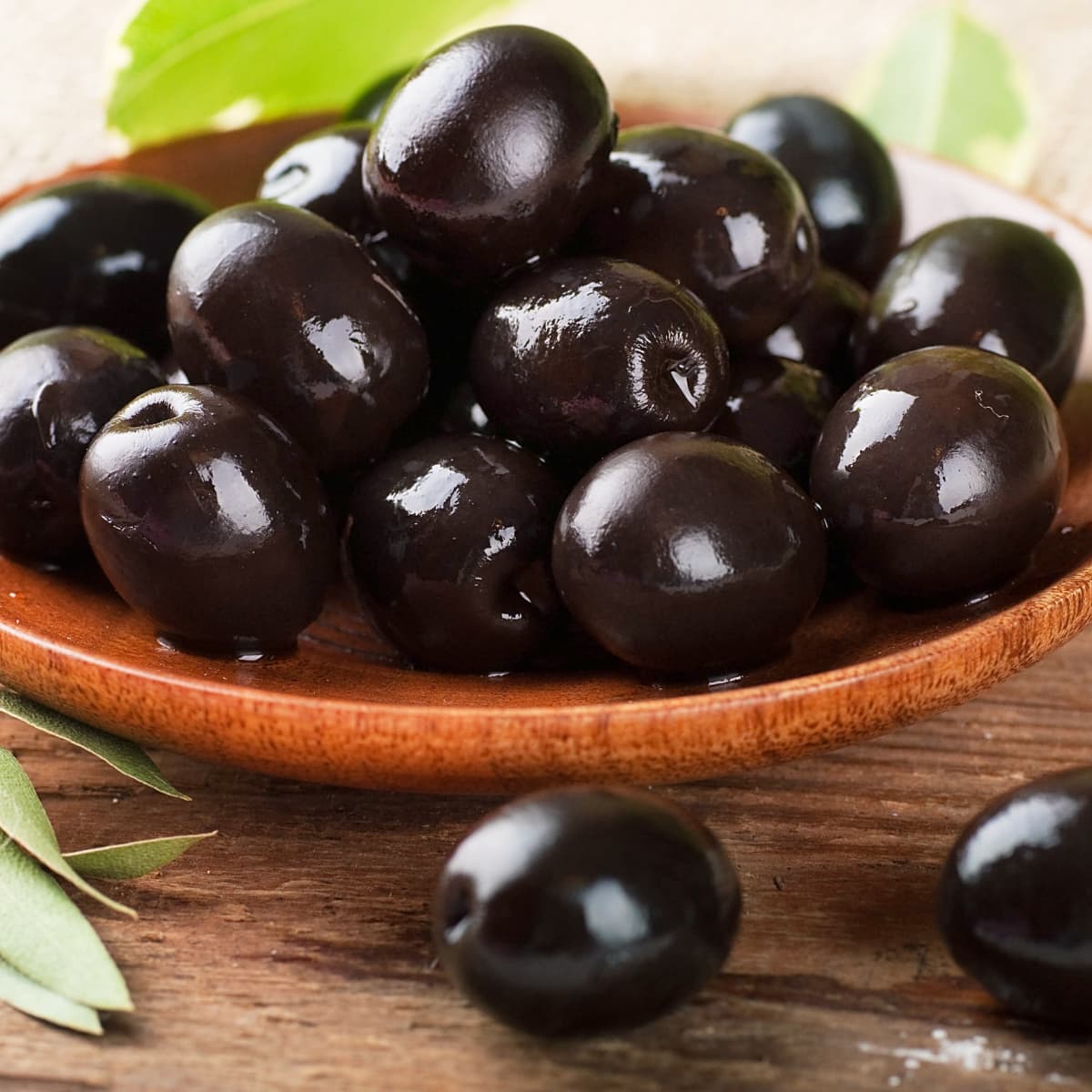
What Are Black Olives?
Black olives are olives picked when fully ripe. They’re the fruit of, you guessed it, the olive tree.
When picked, the color can vary from a lighter shade of brown to dark black. They’re hauled off for processing where they’re cured with salt, oil, or vinegar. The curing process darkens the color, giving them their signature look.
As for their flavor, it ranges from slightly sweet to mildly tangy, with a soft texture.
They’re packed with nutrients like calcium, potassium, and vitamin A. Raw or cooked, black olives also have a wide range of applications.
But watch out! Some black olives are merely green olives in disguise. They’re placed in an alkaline solution and oxidized to look like their darker counterpart.
Black Olive Varieties
Black olives are more than just a canned pizza topping. There are many different cured varieties to try.
Each one has a unique flavor profile to elevate your meals. Here are a few recommendations:
- Kalamata. These Greek olives are one of the most popular types. They have a rich flavor and meaty texture.
- Lugano. These olives sound Italian, but they’re actually Swiss. Wrinkly and salty, they pair well with cured meat and many types of cheese.
- Gaeta. These Italian olives are slightly tart and meaty. They’re excellent for salads and pasta.
- Niçoise. These are a common type of French olives. They’re a little nutty and complex, making them great for snacking.
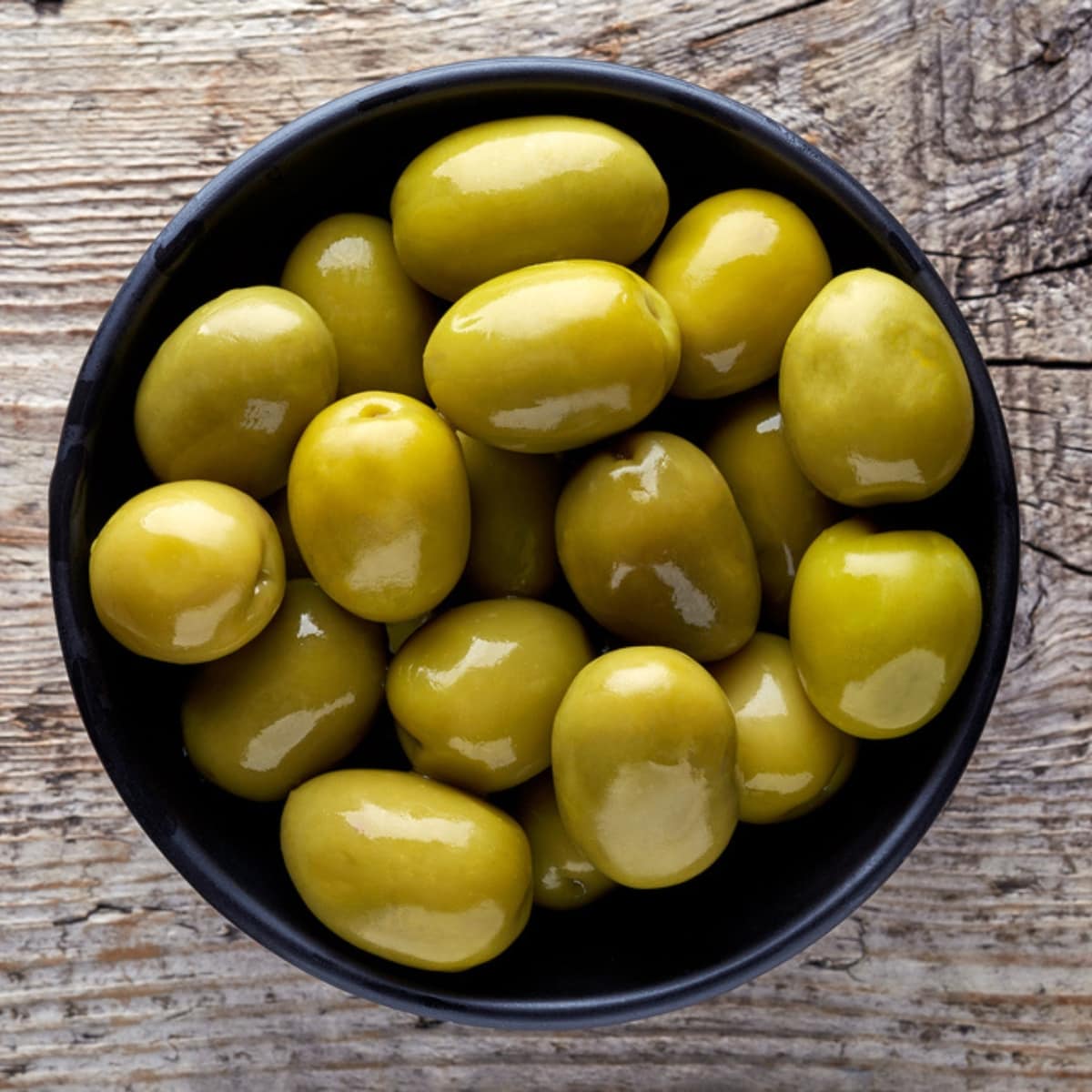
What Are Green Olives?
Green olives are the fruit from the olive tree picked before it can ripen.
Since they’re not at their peak, they require more processing. First, they soak in a lye solution to remove some of the bitterness. Then, they’re cured.
Green olives have a bit of a crunchy texture and bitter flavor. The firm texture also makes them great for stuffing. Pack them with cheese, garlic, or pimentos for a snack.
They’re a fantastic addition to cheese boards and salads. And they’re a signature garnish for martinis and Bloody Marys. Plus, they’re full of antioxidants, vitamins, and healthy fats.
Green Olive Varieties
Like black olives, green olives come in a wide variety, too. Some are a little easier to find in the market than others.
Here are a few popular ones to try:
- Manzanilla. These Spanish olives are one of the more popular green varieties. They’re a little sweet and nutty, perfect for snacking and stuffing.
- Gordal. Another Spanish variety worth trying. Large, mild, and meaty, they’re also great for stuffing.
- Cerignola. Like Gordal, these Italian green olives are also large and mild. Use them for an antipasto platter or an appetizer.
- Picholine. Salt-brined, floral, and fruity, these French olives are a prime addition to cocktails.
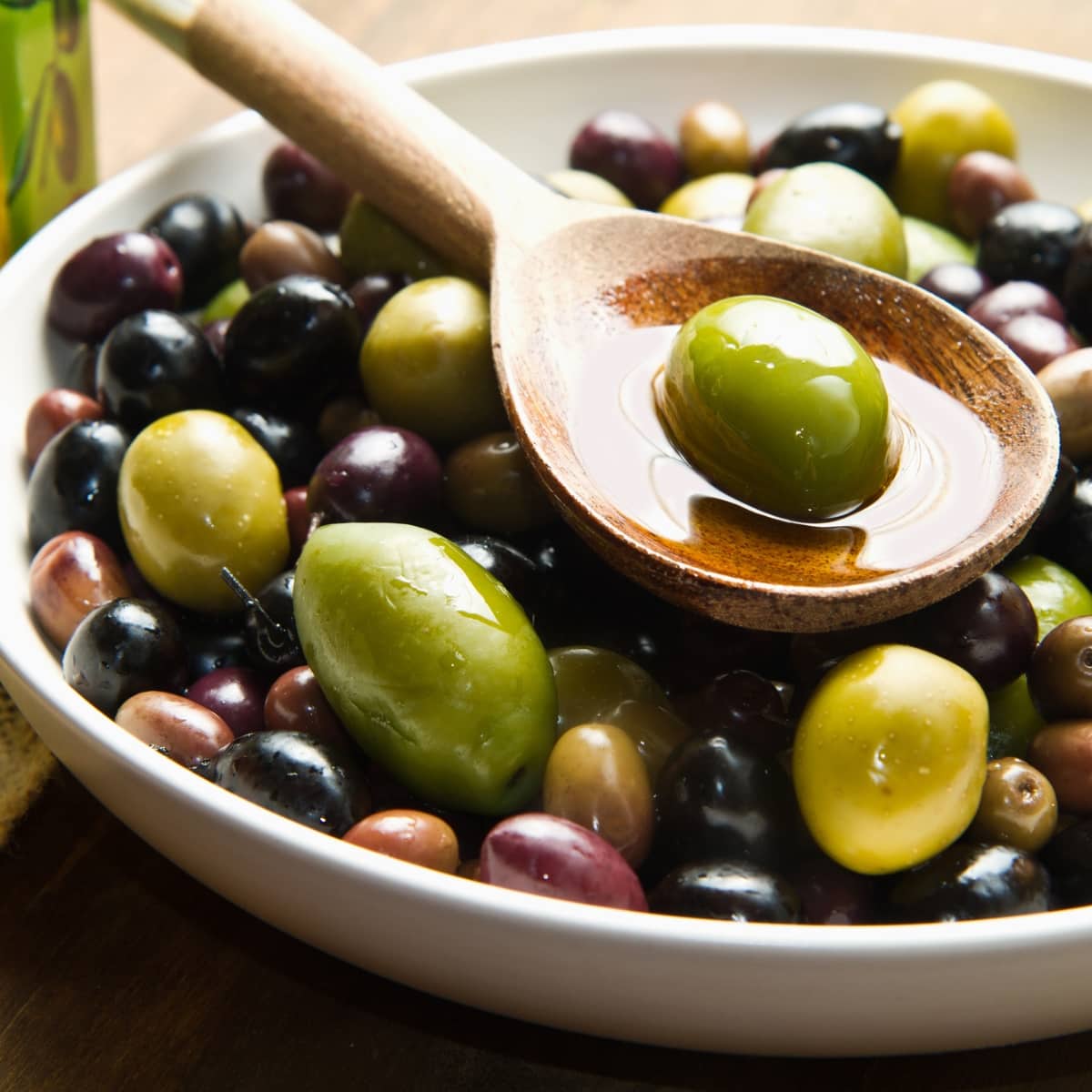
Can You Use Green and Black Olives Interchangeably?
The short answer is yes. But the longer answer is it depends on what you’re making. They’re not interchangeable for every olive recipe because of the texture and flavor. When swapping one for the other, first consider the dish.
You can use raw black and green olives interchangeably for salads, snacks, and or appetizers. Cooking olives is another story.
Black olives lose more of their flavor the longer they cook. If you’re using these instead of green, shorten their cooking time.
